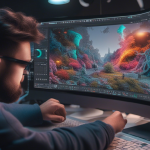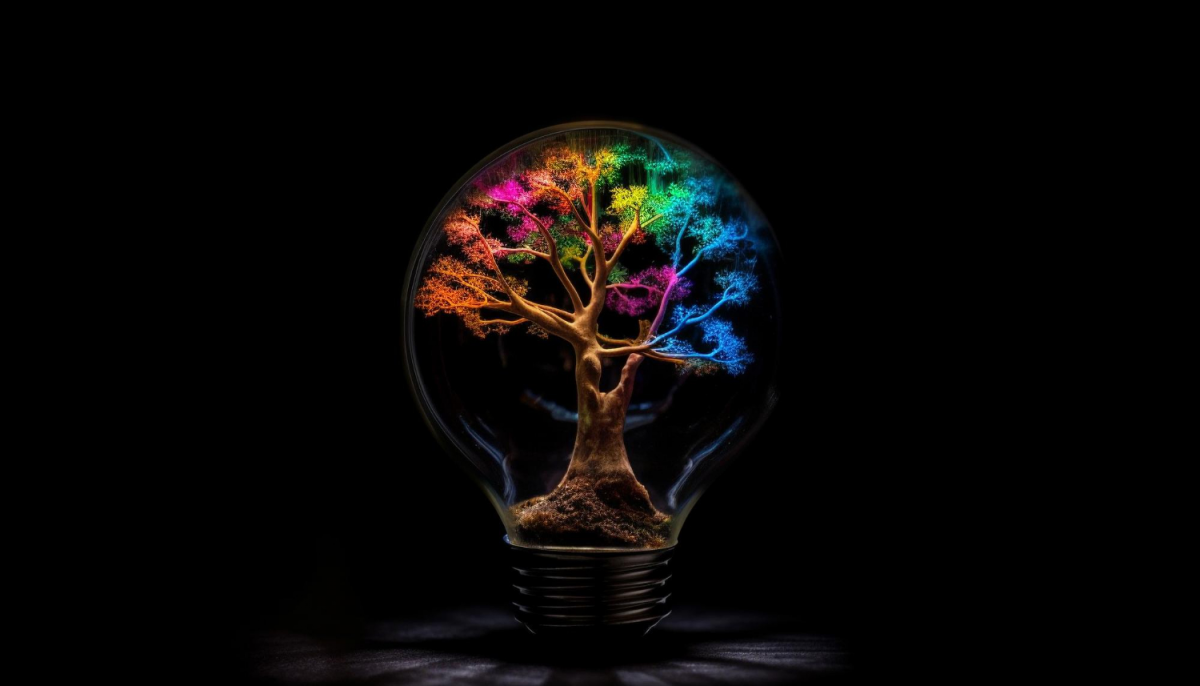The Dynamic Duo: Unveiling the Secrets of Combining Experience and Innovation

Introduction
Unleashing the Power of Experience and Innovation
In a world that thrives on constant change and evolution, the combination of experience and innovation becomes a powerful force driving progress and success. Experience brings wisdom and a deep understanding of past lessons, while innovation sparks creativity and inspires groundbreaking ideas. By harnessing the dynamic synergy of these two forces, organizations can unlock new opportunities, solve complex problems, and flourish in an ever-evolving landscape.
Understanding Experience
A. Definition and Importance of Experience
Experience, in the context of this article, refers to the accumulation of knowledge, skills, and insights gained through practical involvement in various domains. It is a valuable asset that individuals and organizations can tap into to make informed decisions, navigate challenges, and drive growth. Experience provides a solid foundation for understanding the intricacies of a particular field and offers a wealth of historical wisdom to draw upon.
B. The Wisdom of the Ages: Leveraging Past Knowledge
One of the key benefits of experience lies in its ability to leverage past knowledge. Lessons learned from previous successes and failures can be applied to current situations, enabling individuals and organizations to make more informed choices and avoid unnecessary pitfalls. By tapping into the wisdom of the ages, experience becomes a valuable compass guiding decision-making processes and fostering continuous improvement.
C. Exploring Various Types of Experience
Domain Expertise:
Domain expertise refers to deep knowledge and understanding of a specific industry or field. This type of experience allows individuals to navigate complex industry-specific challenges, make informed decisions, and develop innovative solutions that meet the unique demands of their domain.Tacit Knowledge:
Tacit knowledge is the implicit knowledge gained through practical experiences that is difficult to articulate or codify. It includes insights, intuition, and know-how that individuals acquire through hands-on involvement in their respective fields. Tacit knowledge often plays a crucial role in problem-solving and decision-making processes, guiding individuals to make informed judgments based on their accumulated expertise.
Embracing the Essence of Innovation
A. Defining Innovation and Its Significance
Innovation is the process of introducing new ideas, methods, or products that bring about positive change and create value. It is a catalyst for progress, propelling individuals and organizations forward in an ever-changing world. By challenging the status quo and pushing boundaries, innovation fuels growth, fosters competitive advantage, and paves the way for groundbreaking discoveries and breakthroughs.
B. The Catalyst for Progress: Role of Innovation
Innovation plays a pivotal role in driving progress by providing fresh perspectives, promoting creativity, and sparking imagination. It encourages individuals and organizations to think outside the box, embrace diversity of thought, and seek unconventional solutions to complex problems. By constantly pushing the boundaries of what is possible, innovation propels industries forward and creates new avenues for growth and success.
C. Paradigm Shifts: Understanding Disruptive Innovations
Disruptive innovations are game-changers that revolutionize industries and reshape the way things are done. They involve the introduction of novel ideas, technologies, or business models that challenge existing norms and create new market dynamics. Disruptive innovations often emerge from a combination of experience and innovative thinking, as individuals draw on their deep domain knowledge to identify gaps and reimagine existing systems.
Experience and Innovation: A Powerful Symbiosis
A. The Synergistic Relationship between Experience and Innovation
Experience and innovation, when combined, create a powerful symbiotic relationship. Experience provides a solid foundation of knowledge, while innovation injects fresh perspectives and creative solutions into established systems. This symbiosis enables organizations to leverage the best of both worlds, drawing on historical wisdom to inform and guide innovative practices, and using innovation to revolutionize and enhance existing processes.
B. Successful Case Studies: How Experience Boosts Innovation
Innumerable case studies demonstrate the transformative power of combining experience and innovation. For example, in the healthcare industry, experienced surgeons leverage cutting-edge technologies and innovative procedures to improve patient outcomes and enhance surgical techniques. In the technology sector, companies with deep industry experience embrace disruptive innovations to create revolutionary products and services that shape the future of the industry.
C. Fostering Creativity within Established Systems
While experience provides a solid foundation, it is innovation that allows organizations to break free from stagnant routines and foster creativity. By encouraging a culture of curiosity, risk-taking, and open-mindedness, organizations can create an environment where new ideas can flourish within established systems. This balanced approach ensures that the best practices of the past are not undermined but rather enhanced by innovative thinking.
Finding the Balance
A. Achieving the Optimal Mix: Balancing Experience and Innovation
Finding the optimal mix between experience and innovation requires a delicate balance. It involves recognizing the value of both and integrating them harmoniously into organizational practices. By acknowledging the importance of experience while also embracing the need for innovation, organizations can create a culture that encourages the harmonious interplay of these two forces, driving sustainable growth and success.
B. Overcoming the Challenges of Incorporating Both
Integrating experience and innovation can pose challenges for organizations. Resistance to change, fear of failure, and rigid hierarchical structures can hinder the seamless fusion of these two forces. To overcome these obstacles, organizations must foster a culture of open communication, embrace a growth mindset, and actively encourage collaboration across all levels of the organization. By breaking down silos and promoting interdisciplinary collaboration, organizations can create an environment that nurtures both experience and innovation.
Crushing the Silos: Building Collaborative Environments
A. Facilitating Open Communication and Idea Sharing
Open communication and idea sharing are essential to building collaborative environments where experience and innovation can flourish. By creating spaces for dialogue, encouraging diverse perspectives, and promoting active listening, organizations can break down communication barriers and facilitate the exchange of ideas. This free flow of information and knowledge allows for the cross-pollination of experience and innovation, stimulating new insights and breakthroughs.
B. Promoting Interdisciplinary Collaboration
Interdisciplinary collaboration brings together individuals from diverse backgrounds and areas of expertise to collectively solve complex problems and drive innovation. By fostering cross-functional teams and encouraging collaboration across departments, organizations can tap into a rich tapestry of experiences and perspectives. This collaborative approach paves the way for transformative ideas that combine the domain knowledge of experienced professionals with the fresh perspectives of innovative thinkers.
C. Breaking Down Hierarchies: Encouraging Input from All Levels
Inclusive environments that value input from all levels of the organization are critical for unleashing the full potential of experience and innovation. By breaking down hierarchical structures and empowering employees at all levels to contribute their ideas and insights, organizations can harness a wealth of diverse perspectives. This inclusive approach not only boosts innovation but also fosters a sense of ownership, engagement, and collaboration among employees.
Cultivating a Culture of Continuous Learning
A. Embracing a Growth Mindset
A growth mindset is the belief that intelligence and abilities can be developed through dedication, effort, and continuous learning. Cultivating a growth mindset within an organization is essential for nurturing both experience and innovation. By encouraging employees to embrace challenges, learn from failures, and persist in the face of adversity, organizations can foster a culture that values continuous learning and growth.
B. Nurturing a Learning Organization
A learning organization is one that prioritizes and invests in the ongoing development of its employees. By providing access to training, mentorship programs, and resources, organizations can create an environment that fosters continuous learning. This commitment to nurturing the knowledge and skills of employees not only enhances their experience but also fuels innovation by empowering individuals to explore new ideas and stretch their creative boundaries.
Harnessing Technology to Enhance Experience and Innovation
A. Leveraging Digital Tools for Enhanced Decision Making
The digital age has brought forth a multitude of tools and technologies that can enhance decision-making processes. From data analytics and artificial intelligence to virtual collaboration platforms and predictive modeling, organizations can leverage these digital tools to augment experience and innovation. By harnessing the power of technology, organizations can access real-time insights, streamline workflows, and make more informed decisions that blend the best of experience and innovation.
B. Empowering the Workforce with Technology
Technology plays a pivotal role in enabling experience and innovation to thrive within organizations. By providing employees with access to cutting-edge tools, software, and platforms, organizations empower their workforce to embrace innovative practices while drawing on their deep domain knowledge. This fusion of experience and technology creates a transformative environment where individuals can tackle challenges, conceive groundbreaking ideas, and collaborate effortlessly.
Augmenting Experience with Innovation
A. How Innovation Transforms Experience
Innovation has the power to transform and enhance experience by uncovering new methods, tools, and approaches. By embracing innovative solutions, individuals can amplify the impact of their experience, achieving improved outcomes, and uncovering novel insights. Innovation extends the boundaries of experience, pushing individuals to explore new horizons, challenge assumptions, and continuously adapt to an ever-changing world.
B. Revolutionizing Traditional Practices through Innovative Solutions
Innovative solutions have the potential to revolutionize traditional practices and breathe new life into established industries. By combining experience with disruptive ideas, organizations can reimagine outdated systems, streamline processes, and revolutionize the way things are done. From e-commerce transforming retail to telemedicine revolutionizing healthcare, the marriage of experience and innovation has the power to reshape industries and unlock new levels of success.
The Impacts and Benefits of a Harmonious Approach
A. Accelerated Problem Solving and Decision Making
The harmonious integration of experience and innovation accelerates problem-solving processes and enhances decision making. The collective wisdom gained from experience, combined with innovative thinking, offers organizations the ability to tackle complex challenges head-on and find solutions with greater speed and precision. This synergy of experience and innovation expedites progress, drives efficiency, and empowers organizations to stay ahead in a fast-paced world.
B. Increased Adaptability in a Fast-Changing World
In today’s fast-changing world, businesses must be adaptable to thrive. By balancing experience with innovation, organizations gain the agility to navigate rapidly evolving market dynamics, emerging technologies, and shifting customer expectations. Experience provides a stable foundation, while innovation keeps organizations nimble and responsive to change. This adaptability allows organizations to seize opportunities, mitigate risks, and stay relevant in a dynamic landscape.
Breaking through Plateaus: Revitalizing Established Industries
A. Reigniting Growth through Innovation
Established industries often face stagnation and plateauing growth. By embracing innovation, organizations can reignite growth, overcome challenges, and shape the future of their industries. Through a strategic combination of experience and innovative thinking, organizations can identify untapped opportunities, discover new market segments, and introduce game-changing products or services that disrupt the status quo.
B. Reinventing Legacy Systems with Experience
Experience plays a critical role in reinventing legacy systems within established industries. By leveraging deep domain knowledge and historical insights, organizations can identify the gaps and shortcomings of existing systems. This understanding, coupled with innovative thinking, allows for the re-evaluation and reinvention of legacy systems, driving efficiency, customer satisfaction, and long-term success.
The Future: Evolving the Combination of Experience and Innovation
A. Lessons from the Past: Forecasting the Future of Experience
The future of experience lies in continuous learning, growth, and adaptation. Organizations must recognize the importance of experience in shaping their foundations while embracing new technologies, trends, and methodologies. By building on the lessons of the past, organizations can navigate the complexities of the future with confidence, using experience as a compass to guide innovative practices.
B. The Evergreen Essence of Innovation: Shaping the Road Ahead
Innovation remains a constant force shaping the road ahead. As technology advances and industries undergo transformative shifts, the essence of innovation will continue to evolve. Organizations must stay abreast of emerging trends, embrace change, and cultivate a mindset that embraces innovative thinking. By remaining agile, adaptive, and receptive to change, organizations can harness the power of innovation to ride the waves of disruption and seize future opportunities.
Summary: The Dynamic Synergy of Experience and Innovation
Harnessing the Power of Historical Wisdom with Cutting-Edge Ideas for Thriving in an Evolving World
By embracing both experience and innovation, organizations can create a dynamic synergy that propels them to new heights of success. Experience provides the solid foundation of knowledge and wisdom, while innovation ignites the spark of creativity and unlocks new possibilities. When these two forces collaborate, organizations can navigate complexity, seize opportunities, and thrive in a rapidly changing world. The key lies in striking an optimal balance, fostering collaboration, nurturing a learning culture, and leveraging technology to augment experience and innovation. The future holds immense potential for those who dare to embrace the dynamic duo of experience and innovation.
FAQs (Frequently Asked Questions)
- How do you define experience in the context of this article?
- Experience refers to the accumulation of knowledge, skills, and insights gained through practical involvement in various domains. It includes both domain expertise and tacit knowledge.
- What are the different types of experience discussed?
- The different types of experience discussed include domain expertise, which is deep knowledge and understanding of a specific industry or field, and tacit knowledge, which refers to implicit knowledge gained through practical experiences that is difficult to articulate or codify.
- How does innovation complement experience?
- Innovation complements experience by bringing fresh perspectives, creative solutions, and new ideas to established systems. It amplifies the impact of experience, enables the transformation of traditional practices, and drives progress and growth.
- What are the challenges organizations face when trying to combine experience and innovation?
- Organizations face challenges such as resistance to change, fear of failure, and rigid hierarchical structures when trying to combine experience and innovation. Breaking down silos, fostering open communication, and encouraging collaboration across all levels of the organization are key to overcoming these challenges.
- Can you provide real-world examples of successful combinations of experience and innovation?
- Yes, in the healthcare industry, experienced surgeons leverage innovative technologies and procedures to enhance patient outcomes. In the technology sector, companies with deep industry experience embrace disruptive innovations to create revolutionary products and services.
- How does technology contribute to enhancing experience and innovation?
- Technology enhances experience and innovation by providing digital tools for enhanced decision-making, enabling efficient workflows, and empowering the workforce with cutting-edge solutions. Technology augments the impact of both experience and innovation, enabling organizations to stay competitive and adapt to evolving landscapes.
- How can organizations create a culture that nurtures both experience and innovation?
- Organizations can create a culture that nurtures both experience and innovation by embracing a growth mindset, fostering a learning organization, promoting interdisciplinary collaboration, and facilitating open communication and idea sharing.
- What are the long-term benefits of incorporating both experience and innovation into business practices?
- Incorporating both experience and innovation into business practices leads to accelerated problem-solving, enhanced decision-making, increased adaptability, and revitalization of established industries. It drives sustainable growth, propels organizations forward, and ensures long-term success.
- How can established industries revitalize themselves by embracing experience and innovation?
- Established industries can revitalize themselves by embracing experience and innovation through reinventing legacy systems, identifying untapped market opportunities, and embracing disruptive ideas. This approach reignites growth, overcomes challenges, and shapes the future of the industry.
- What does the future hold for the combination of experience and innovation?
- The future holds immense potential for the combination of experience and innovation. By building on the lessons of the past, embracing emerging trends, and cultivating a mindset that embraces change, organizations can harness the dynamic duo of experience and innovation to thrive in a rapidly evolving world.









